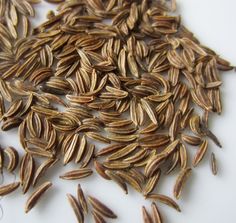Rosemary's Substitutes

Rosemary is a fragrant plant native to the Mediterranean and Asia. It’s been used as a medicinal and culinary plant for centuries.
This is an evergreen shrub with needle-like leaves, blue, white, purple, or pink blooms, and a distinct pungent odor. It has the appearance of pine, although it is a member of the mint family Lamiaceae, which includes sage, mint, basil, savory, thyme, oregano, marjoram, and many more culinary and medicinal herbs.
Rosemary may be bought in various stores, both fresh and dried. If you don’t have it or don’t like its strong flavor, thyme, tarragon, savory, sage, caraway seed, marjoram, or any of the herbs listed below are great replacements.
Best Rosemary Substitutes
Rosemary has a distinct flavor that is difficult to replicate. As a result, dried rosemary is the greatest alternative for fresh rosemary. However, replace one teaspoon dry rosemary with one tablespoon fresh rosemary. The following herbs are excellent substitutes for rosemary.
1. Rosemary olive oil, salt, or butter
Fresh rosemary leaves are used to make rosemary olive oil, salt, and butter. As a result, they are an excellent alternative for rosemary and may impart a rosemary taste to your food.
Rosemary olive oil is made using extra virgin olive oil and fresh rosemary leaves. Rosemary olive oil enhances the flavor of chicken meat, potatoes, fish, lamb, and other meals with its fragrant savory and herbal flavor.
Fresh rosemary leaves are also used to make rosemary salt and butter. The salt is ideal for flavoring vegetables, meat, fish, and shellfish, while the rosemary butter adds a savory touch to any dish.
You may spread rosemary butter on toast or grilled meat. Alternatively, melt it and pour it as a sauce over cooked vegetables, fish, and shellfish.
2. Thyme

Both thyme and rosemary are mint family members. It has a herbal flavor with wood, grass, and flowers overtones.
It’s used in savory foods, including roasted meat, vegetables, and fish, as well as soups, marinades, stocks, sauces, and various savory baked items. Substitute 1 teaspoon of thyme for one teaspoon of rosemary for a milder taste.
3. Tarragon
Tarragon is a fragrant herb with a bitter-sweet licorice flavor with overtones of mint, eucalyptus, vanilla, and pepper. It tastes a little different from rosemary. They are, however, both popular elements incomparable cuisines. It enhances the flavor of various soups, dressings, fish, vegetables, meat, mushrooms, sauces, fish, and other foods.
4. Savory
Savory is classified into two types: winter savory and summer savory. Summer savory is sweeter in flavor than winter savory. As a result, it is a better substitute for rosemary.
Summer savory’s rich, sweet, mint, and thyme-like taste makes it great for marinades, soups, stews, pork, beans, seafood, and peas.
5. Sage
Sage, which belongs to the mint family and iis a good substitute for rosemary. It has an earthy, citrus, and pine flavor that warm meals. Marinades, soups, salads, fish, poultry, meats, sauces, veggies, cheese, and pasta all benefit from it.
6. Caraway seed

Caraway seeds can be used whole or crushed. The ground ones have a more intense taste. They taste earthy and mildly anise, with a trace of spice and citrus.
Soups, curries, vegetables, sausages, salads, potatoes, cakes, soups, cookies, hog meat, stews, and bread may all benefit from the addition of caraway seeds.
7. Marjoram
Marjoram is a mint family herb with a similar but milder flavor to oregano. It has a moderate mint, citrus, and pine flavor that complements meat meals and stews.
This herb is also found in spice blends such as herbes de Provence, Italian seasoning, and za’atar. It works nicely in various soups, salad dressings, marinades, fish, potatoes, shellfish, and other foods.
8. Oregano
Oregano is one of the most often used herbs. It adds a distinct taste to your foods with its somewhat bitter, pungently earthy, and minty flavor. Sprinkle it on pizza and salads, or mix it with spaghetti sauce, shellfish, poultry, fish, pork, beans, or cheese.
9. Basil
Basil comes in over 60 different types, each with its distinct flavor. Basil has a fresh, somewhat spicy, and mildly minty taste.
On the other hand, some types have a savory, citrus, or spicy licorice flavor. Salads, curries, soups, tomato sauces, chicken, fish, shellfish, pasta, and desserts benefit from basil.
10. Parsley
There are two types of parsley: flat-leaf parsley and curly-leaf parsley. Parsley is used as a garnish and spice because of its fresh, light, and slightly bitter flavor.
It tastes different from rosemary. If you have it on hand, you can use it as a replacement. Your food will have a sense of freshness.
Soups, stews, sauces, curries, and salads are just a few of the meals that call for parsley. It goes well with roasted vegetables, fish, poultry, shellfish, and ground meat.
11. Dill
Dill has a distinct green, fresh, and anise-licorice taste. Just a tiny quantity added to your meal will increase the flavor.
It should, however, be added after the cooking period because it will lose taste if cooked for too long. Dill may be used to season and pickle salads, marinades, dressings, meat, vegetables, sauces, fish, stews, bread, and pickles.
12. Mint

There are many various tastes of mint, such as orange, apple, and chocolate. Spearmint and curly mint, on the other hand, are the most commonly utilized kinds in cookery.
Mint has a pleasant, fresh flavor and a cooling impact on the tongue. Mint is used in various meals, including lamb meat, salads, soups meat, roasted potatoes, sauces, stews, bread, vegetables, and desserts.
- Bay leaves
Bay leaves have a bitter herbal taste similar to oregano and thyme. They will add flavor to stews, soups, sauces, stocks, and pickling brines. Add them at the beginning of the cooking process to add flavor to the cuisine and remove them after the dish is done.
Rosemary facts that will astound you
Rosemary has a flavor that is similar to lemon, wood, pine, and pepper, with traces of sage, lavender, citrus, mint, and evergreen.
As a culinary herb, rosemary lends flavor to various foods, including salads, soups, stews, casseroles, and other baked items. It goes nicely with lamb, pig, chicken, fish, shellfish, potatoes, mushrooms, cereals, and various other foods.
Because rosemary has a rough texture, it is frequently crushed or diced before being used in meals. It also has a strong flavor, so it is used sparingly as a fresh and dried herb. The key ingredient in rosemary olive oil, butter, and salt is fresh rosemary.
FAQs
Can I use basil instead of rosemary?
Yes, you may use basil instead of rosemary. Substitute one teaspoon rosemary for one teaspoon basil.
Can I substitute Italian seasoning for the rosemary?
Rosemary is a component of Italian seasoning. So, instead of rosemary, add Italian spice and enjoy the many different tastes in your food.
Are thyme and rosemary the same thing?
Thyme and rosemary are two different herbs in the mint family. Rosemary is more flavorful than thyme. As a result, you should use a lower quantity as a replacement for thyme.
Can I substitute dill for the rosemary?
Dill is an excellent alternative for rosemary. It will give your food a fresh, sweet, and grassy anise taste.
Final Thoughts
Rosemary has a distinct flavor that is difficult to replicate. If you use any of these substitutes, start with a small amount and add more as needed. You will not get the same flavor. You will, however, save your food and flavor it somewhat differently.











